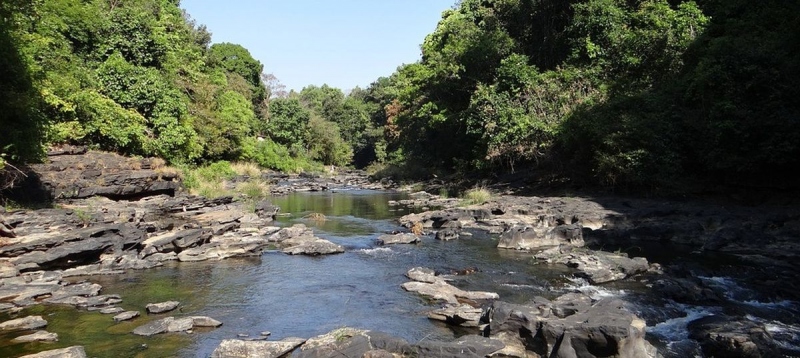Sustainable development can be achieved by saving and sharing water

Rivers have been the lifeline of communities since time immemorial. The civilizations that prospered and perished include the lower Mesopotamia (3000 BCE), the Egyptian civilization along the Nile river (3000 BCE), the Harappan civilization in the Indus River Valley (2500 BCE), and the Chinese civilization along the Yellow and Yangtze rivers (2200 BCE). From farmers in African countries, who rely on Nile river water to irrigate their crops, to religious groups such as Hindus who view Ganges river water as sacred, rivers serve a vital purpose in the lives of people from different countries, cultures, and religious backgrounds all across the globe. The population growth and environmental factors have raised deep concerns amongst the political leaders, leading to water-sharing conflicts.
On March 14, we commemorate the international day of action against dams and for rivers, water, and life. The concern for this awareness was voiced by the participants of the first international meeting of people affected by dams in March 1997 in Curitiba, Brazil. River experts from 20 countries decided that March 14 will be the Day of Action for Rivers. The participants aimed to unite against the destruction of rivers, other aquatic systems, and the ecologically fragile watershed areas. It was felt that just as people have their right to freedom, rivers too should have rights.
The theme for the International Day of Action for Rivers 2021 is the Rights of Rivers. For years, environmentalists have demanded that rivers be declared a national asset and given legal rights. Many rivers around the world, especially in Third world countries, have been reduced to sewage canals or choked with toxic industrial waste. Often there are encroachments on the flood-plains, which have also become dumping sites. The 2500-km long holiest Ganges river exhibits a mélange of urban sewage, animal waste, pesticides, fertilizers, industrial rejects, and rivulets of ashes from cremated bodies. The Nile river, which is the life artery of Egypt and the main freshwater resource for drinking and irrigation, has steadily deteriorated over several decades due to the disposal of industrial, agricultural, and domestic effluents.
The major conflicts arise between countries on water-sharing issues when the natural resource gets depleted. The causes of water scarcity are population growth, climate change, pollution, urbanization and even changing diets due to economic growth. The impending water scarcity crisis is a combination of population growth that causes actual scarcity and wastage. On the one hand, although water is a renewable resource, there is only a fixed amount of it on Earth and each human being needs a minimum amount of it to survive. Further, humans are currently depleting unrenewable sources of fresh water at an unsustainable rate, which will only put more pressure on the fixed amount of above-ground sources that are already drying up. On the other hand, plenty of water is wasted every year - the culprit is poor irrigation practices.
Competition over limited water resources is one of the main concerns for the coming decades. The drying out of rivers globally due to damming of rivers and naturally due to climate change poses a unique and challenging problem to the international governance of rivers. In a study published in Global Environmental Change 2018, researchers tried to map out how water wars will emerge around the world and which countries are most likely to see a water-related conflict in the coming decades. Worldwide, the researchers found that rising temperatures and population growth will increase the chance of cross-border conflicts by between 75 to 95 percent in the next 50 to 100 years.
The study also identified potential hot spots, which were often places where a water source such as a lake or basin was shared by several countries or political groups. Water sources like the Nile, Ganges-Brahmaputra in the Indian subcontinent, the Indus river in Asia, the Tigris-Euphrates, and Colorado rivers were highlighted as potential hot spots. The tension won’t necessarily erupt into a conflict, but it depends on how well prepared and equipped the countries are to co-operate. After all, the next war on the Earth will be fought over water - it will be hydro-politics.
In India, the Kaveri River has been the source of a serious conflict between Tamil Nadu and Karnataka. The genesis of this conflict rests in two agreements in 1892 and 1924 between the erstwhile Madras Presidency and the Princely State of Mysore. Decades of negotiations between the parties bore no fruit, the matter has now become sub judice. Goa and Karnataka are battling out a two-decade-long dispute in the Supreme Court over the sharing of the Mhadei waters.
Just as we love our land, forests, people, cultures, food, ethnicity, we need to care for our rivers. At the local level, we can plan awareness campaigns in our neighbourhood or host events on social media and share views about the importance of rivers in our lives on International Day of Action for Rivers. It is an excellent idea to share with children the historical perspectives and mythological stories around the great Indian rivers. It is now that we strive hard to protect rivers and defend the rights of people who depend on rivers. Life is impossible without water. If we want sustainable development, we need to learn the importance of saving and sharing water for our future generations.
(The writer is a scientist who researches on global climate change issues)